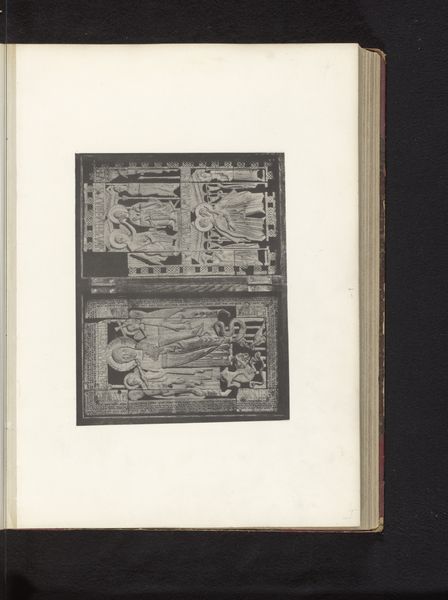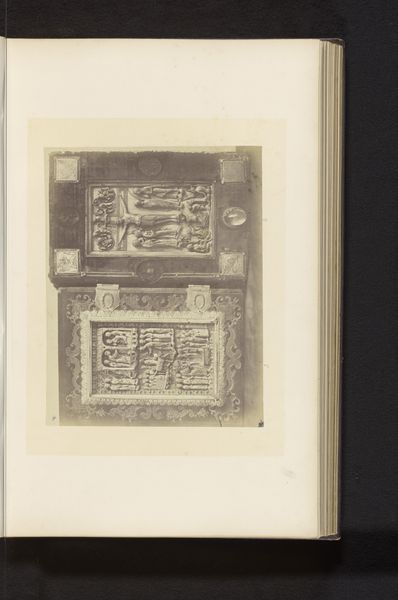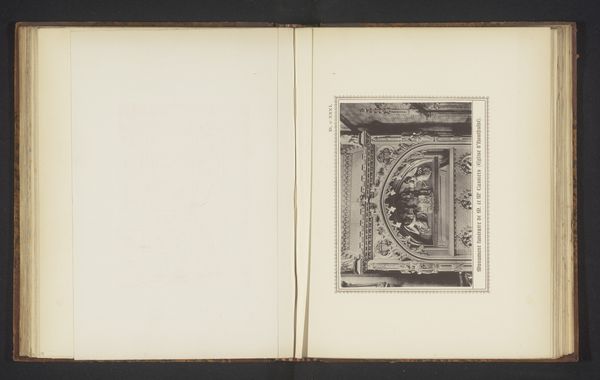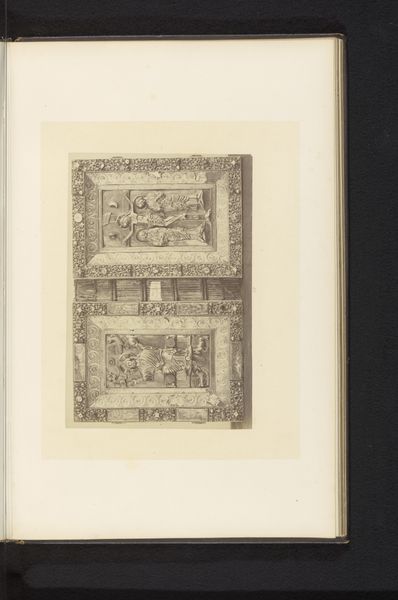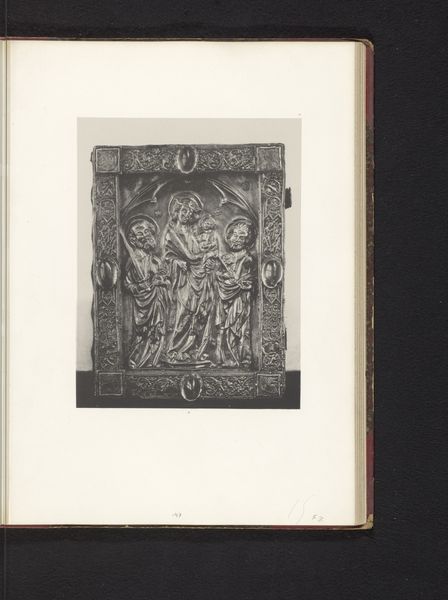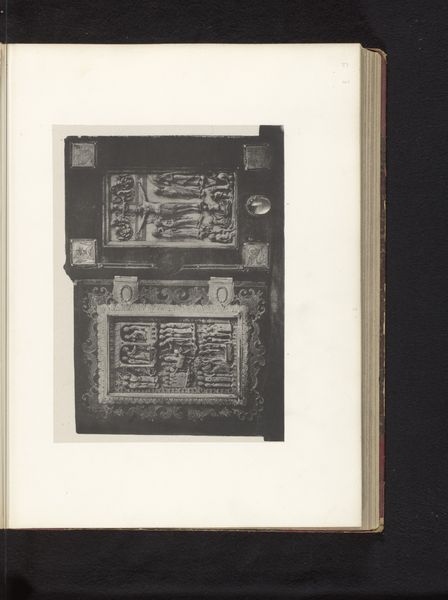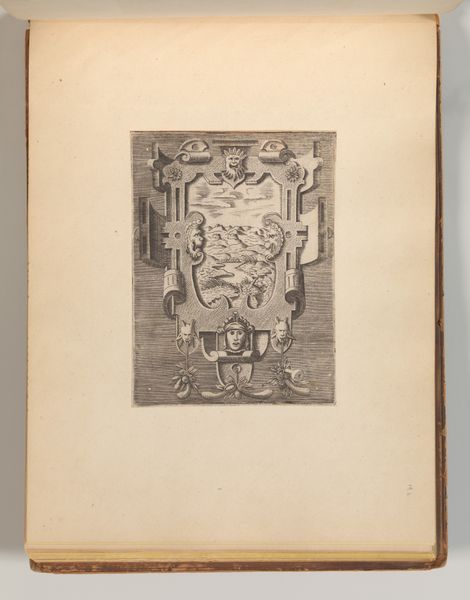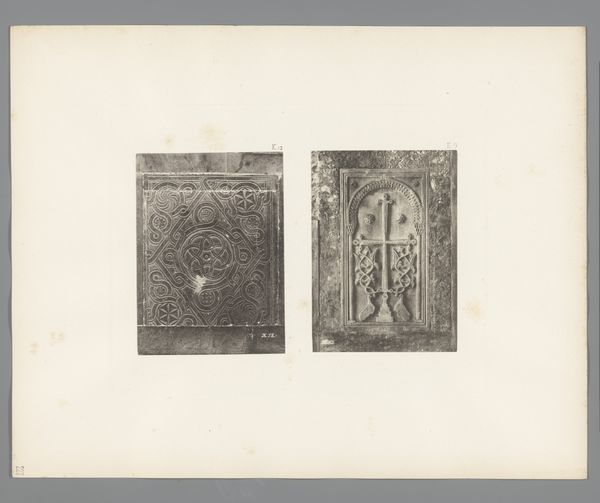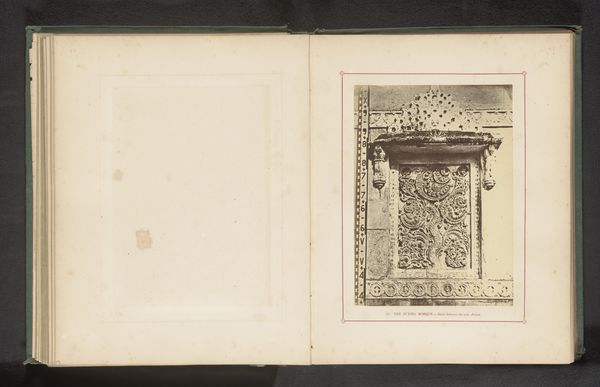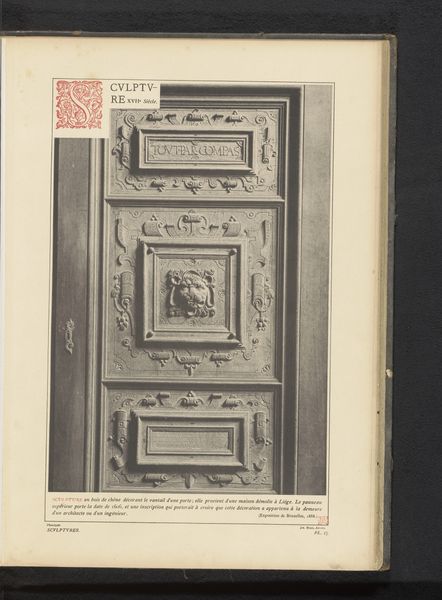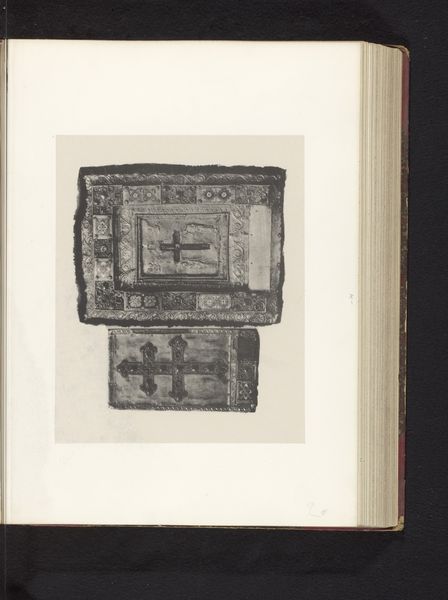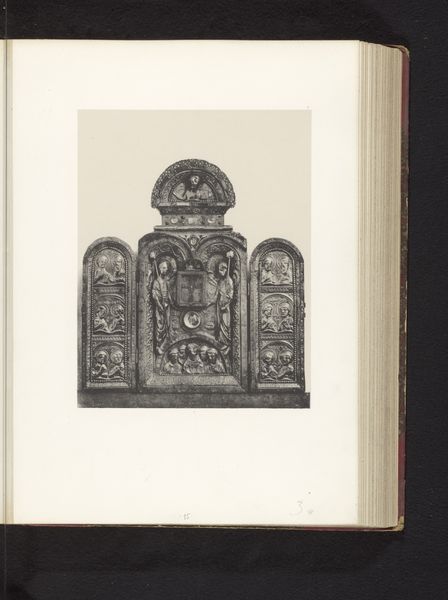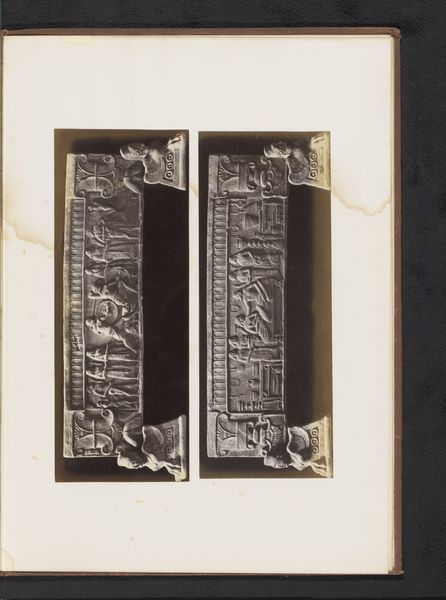
Tweeluik van ivoor met voorstellingen uit het Nieuwe Testament, uit de Sint-Martinskerk in Genoelselderen, opgesteld op een tentoonstelling over religieuze objecten uit de middeleeuwen en renaissance in 1864 in Mechelen 1864
0:00
0:00
print, relief, photography, sculpture, gelatin-silver-print, ivory
#
medieval
#
narrative-art
# print
#
relief
#
figuration
#
photography
#
sculpture
#
gelatin-silver-print
#
history-painting
#
ivory
Dimensions: height 195 mm, width 249 mm
Copyright: Rijks Museum: Open Domain
Editor: We're looking at a photograph of an ivory diptych, titled "Tweeluik van ivoor met voorstellingen uit het Nieuwe Testament..." which translates to "Ivory Diptych with scenes from the New Testament." It was displayed in 1864 in Mechelen. I find the precision of the carvings striking, but also I wonder, what is it about the composition that draws the eye? Curator: Precisely. The initial allure resides in its medium: ivory. Note the fine, almost translucent quality the photograph conveys. How does the monochromatic presentation influence your perception of the diptych's original impact? The arrangement of scenes in the two panels also provides the artwork's visual balance. Editor: I suppose removing the color highlights the forms and the intricacy of the carving. But what do you mean by balance? Curator: The two panels invite comparative scrutiny. Examine the interplay of horizontal and vertical elements. Note how the artist orchestrates spatial recession within each panel. Semiotically, what inferences can you draw from the subjects portrayed? Do you think this compositional balance enhances or diminishes the narrative impact? Editor: I see your point. The arrangement does create a sense of harmony. And now that you mention the semiotics, the stories from the New Testament, paired side-by-side in such a balanced composition, must have a powerful impact for the original audience. Curator: Exactly. The photograph, though secondary to the diptych itself, serves as a study in form, light, and the lasting legacy of medieval artistry. I am happy you noticed the important element: the photograph documents the work of art within a context of display in 1864. Editor: So, the photograph transforms the original work and also makes it into something new. Thank you for helping me to see all these subtle but essential details. Curator: My pleasure. Close observation is key.
Comments
No comments
Be the first to comment and join the conversation on the ultimate creative platform.
